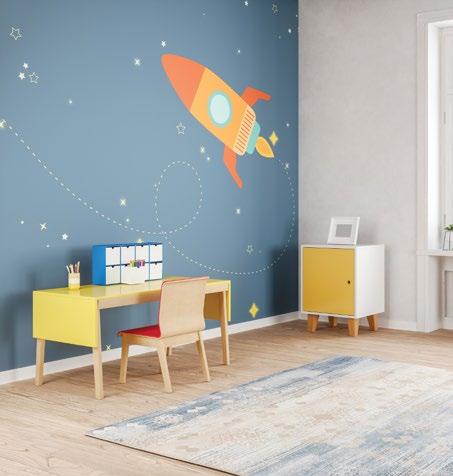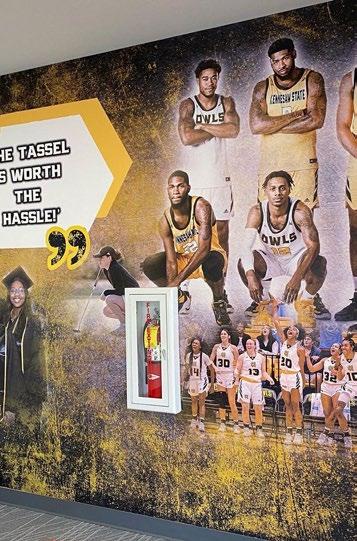
5 minute read
The Truth About “Sustainable” Products
By Jay Kroll, General Formulations
Ok, WrapFam, I think it’s time for a Wrap Family Meeting.
How many times have you gotten the question (or some variant): “Do you have any sustainable material options?” We need to talk about the response, some education, and most importantly—the honest analysis of the root, the resources, and the right path forward. I’d like to do three things: first, zoom out; second, acknowledge the truth; and third, figure out how we can keep moving forward—meaningfully—in this space.
The term "Sustainable" carries a multitude of interpretations, necessitating a deep dive into what customers mean by sustainability and the extent they envision for their product. Sustainability can encompass a range of factors, from the use of recycled or locally sourced materials to considerations about product longevity—how frequently Material X might need replacement compared to Material Y. Questions about the environmental impact of inks, as well as the potential for the material to be recycled, upcycled, or reused, are also crucial. It's important to examine the entire Spectrum of Sustainability, considering the full lifecycle of the product in our conversations.
Discussing environmental responsibility means that we have to consider the full lifecycle of materials, from their inception to disposal, rather than focusing solely on their recyclability or the likelihood of being recycled. Integrating recycled content into products, such as using films or release liners made from recycled materials, significantly cuts down on the need for new, virgin materials, and that will diminish the product's environmental footprint. The adhesive coating process also plays a significant role, and capturing solvents and other organic compounds during the manufacturing process for environmentally safe disposal is crucial. Opting for materials produced through conscientious methods and technologies reinforces the critical impact of manufacturing practices within the broader approach to sustainability.
Speaking of which, are any of these printed, adhesive-coated materials actually recyclable? This depends a lot on your local municipality and its processing options, but for the most part, the only labels you can run through a standard recycling program are bottle labels that end up getting burned up in the process for those materials. In reality, recycling stickers, wraps, and decals pose challenges, including the need to sort matching components or ingredients, remove liners and layers, and determine the appropriate recycling process. Advancements are being made by vinyl manufacturers in recycling bulk materials for use in other markets, and it's anticipated that these efforts will be enhanced in the upcoming years. The key challenge lies in optimizing this process for efficiency and accessibility to ensure it has the greatest positive environmental impact.
Ruggs shared a story about a time he developed an advertising campaign, where a client requested "green PVC," and he humorously offered them choices between Light Green and Forest Green. Despite the playful response, the environmental implications of using oil-based films like PVC are significant due to their chemical composition. PVC has historically been criticized for its use of phthalates and certain plasticizers, which gave it a distinctive smell. However, many of these harmful chemicals are no longer present in today's graphic vinyl films. Modern vinyl films can be distinguished by certifications such as REACH, RoHS, and California Prop 65, which verify that they are devoid of these harmful substances and "forever chemicals." The vinyl films currently available are significantly different from those of previous generations.
The Use Life, made up of the overall durability, printability, and conformability of a material for specific uses is also a crucial consideration. For instance, if a Polyester print film satisfies the PVC-free requirement but needs to be frequently replaced, is unsuitable for the intended installation, or requires extra chemicals and coatings for printability or durability, can it truly be considered a more sustainable choice? While it's important to continue innovating in the materials sector, there must also be a candid conversation about ensuring that our solutions do not introduce new issues simply to facilitate quick sales.







I'd like to clarify that I'm not an expert in this field. Rather, I'm an inquisitive enthusiast, seeking solutions and aiming to pose thoughtful questions to encourage ongoing progress. At the same time, I recognize the considerable advancements that have been achieved in the graphics market in recent years. I'm not one to dwell on pessimistic outlooks, nor am I willing to simply accept things as they are without question. I firmly believe there's substantial room for improvement in terms of materials, but it's also important to acknowledge the significant progress that has already been made. And WrapFam, understand that this conversation is only just beginning. Your perspective—as the ones directly involved, hands-on, engaging firsthand, and actively on the front lines—is critically important. I encourage you to embrace your curiosity, share your ideas, pose insightful questions, and join forces with us. Together, we can drive this important conversation forward.
Jay Kroll
Jkroll@generalformulations.com
Product Manager (Cut & Craft Films, Wall Graphics and Transit Media), General Formulations











